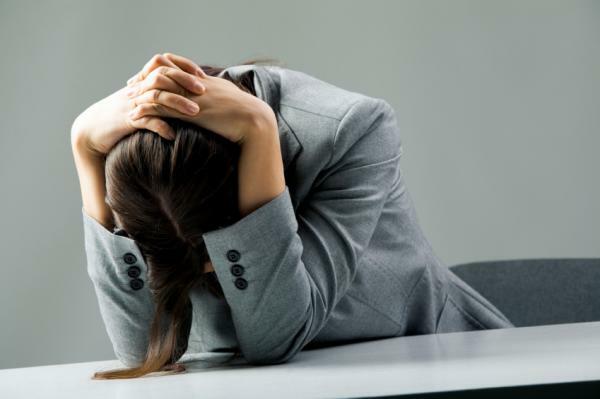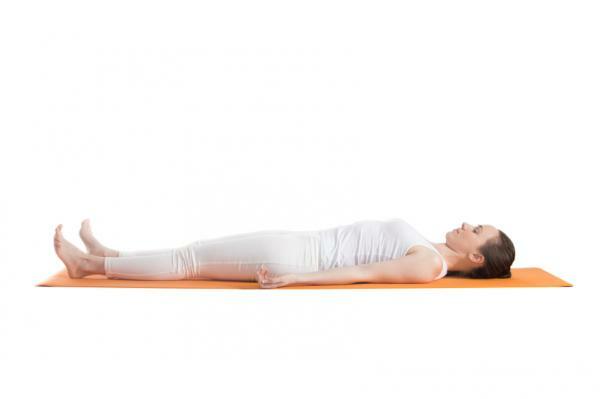
The somnambulism it is a sleep problem that implies that the person gets up and walks or performs a specific action while asleep. In general, this is a more common disorder in childhood and is usually overcome before 10 years of age, but it can also remain and be observed in adults and even arise when one has advanced in age due to some factors such as psychological disorders, illnesses, consumption of alcohol, drugs or medications, etc. When sleepwalking occurs in adulthood, it is important to find out what the exact cause is and initiate a treatment that helps to solve the situation and improves the quality of rest of the affected person. Most of the time, it is enough to adopt some preventive measures and change lifestyle habits. In the following Psychology-Online article, we explain in detail what they are the causes, symptoms and treatment of sleepwalking in adults.
Index
- What is sleepwalking
- Causes of sleepwalking in adults
- Sleepwalking in adults: symptoms
- Treatment for sleepwalking in adults
- When to see a specialist for sleepwalking
What is sleepwalking.
The somnambulism it's a Sleep disorder in which people who suffer from it, despite being in a dream situation at the brain level, get out of bed, walk and carry perform complex activities or actions without being aware of it and without remembering such activities the next morning when they wake up. During an episode of sleepwalking, the person's brain is partially but not fully awake.
This disorder usually occurs in the first half of the night, specifically, in the Non-REM phase N3, one of the phases of sleep in which brain activity is slower. Usually the sleepwalker gets out of bed and wanders by performing complex motor behaviors during deep sleep. While she is asleep, she can get up, sit in bed, walk, rub her eyes, touch objects, get dressed, go outside, etc.
Although sleepwalking is more common in children than in adults, it has been suggested that this disorder affects up to 4% of adults and that in this case it is more difficult to distinguish with respect to other sleep disorders and can be more dangerous because, in many Sometimes, it is associated with violent behaviors during sleep that can harm the affected person and / or the people close to them. moment.

Causes of sleepwalking in adults.
The causes of sleepwalking are not entirely clear, but the suffering of these episodes during sleep has been linked to factors such as the following:
- Family history of sleepwalking: the suffering of this disorder has an important component hereditary, since around 80% of the children who present it have a direct relative who has this trouble.
- Immature brain development.
- Conditions that alter the continuity of sleep, such as sleep apnea or snoring.
- Lack of sleep or interrupting your usual sleep schedule.
- Fever and taking some medicines: both high fever and the consumption of some medicines can favor that the deep phases of sleep are even deeper and the chances of having an episode of somnambulism.
Furthermore, in the case of Adults, other possible causes of sleepwalking What:
- Consumption of alcohol or narcotic substances.
- Stress, fatigue, and anxiety: These conditions can increase both the frequency and severity of sleepwalking episodes.
- Mental disorders.
- Consumption of some medications or drugs, such as sedatives, hypnotics or for the treatment of psychiatric disorders.
- Conditions like epilepsy, seizures, restless leg syndrome, etc.
- Neurodegenerative diseases such as Parkinson's, Alzheimer's and Lewy body dementia.
- In elderly patients, sleepwalking can be a consequence of neurocognitive disorder, in which mental function declines due to suffering from illness.
Sleepwalking in adults: symptoms.
The duration of sleepwalking episodes varies from one person to another, as cases are observed in those that only last a few seconds or minutes, while others last up to 30 minutes or more. On average, they usually last about 10 minutes.
The main symptoms of sleepwalking are the ones we list below:
- Get up and get out of bed.
- Sit upright in bed and open your eyes as if you are awake when you are actually asleep.
- Walk while you are asleep.
- Carry out a specific activity during sleep, such as going to the bathroom, dressing, undressing, moving objects, eating, etc.
- Absent facial expression and / or blank stare.
- Talking while asleep and saying nonsensical things.
- Confusion and disorientation upon waking.
- Not remembering the sleepwalking episode or what happened during it the next day.
- Do not respond or speak to other people during the episode.
- If someone wakes you up during the sleepwalking episode, you may be aggressive.
- The next day, you may be more tired and have difficulty performing your daily tasks due to sleep disturbances.

Treatment for sleepwalking in adults.
There is no specific treatment for sleepwalking in adults, because when this is occasional it usually solve it on its own or disappear when it is affected and corrects the factor that may be causing its appearance. However, when it is necessary or a medical specialist indicates it, treatment for sleepwalking may include:
- Treatment of the disease or condition that is causing sleepwalking, since as we have previously commented this could be the consequence of some mental disorder or underlying disease.
- Taking short-term tranquilizing medications, which can help decrease sleepwalking episodes.
- If it is suspected that this disorder is due to the taking of a specific drug, the doctor should be consulted about the possibility of replacing it with another or adjusting the dose.
- Psychotherapy: Proper psychological therapy can help reduce anxiety, improve sleep, overcome stress, and learn to relax properly.
In addition to the above, in the case of being a sleepwalker, there are a number of prevention measures that should be adopted to reduce the frequency of these nocturnal episodes and improve the quality of life of the affected person. The most important ones are:
- Maintain good sleep hygiene: try to sleep between 7 and 8 hours a day, set a time to go to sleep at the same time every day, rest in a calm and relaxed environment, avoid noise when sleeping, avoid doing activities that activate the mind before sleeping, etc.
- Reduce anxiety and stress in the day to day: for this, the practice of yoga or Pilates, doing physical exercise or learning relaxation techniques They can be very good options to relax and promote a night's rest. In the event that anxiety or stress cannot be reduced by oneself, it will be advisable to go to a professional psychologist to start the appropriate therapy.
- Avoid the consumption of alcohol and drugs.
- It is also important to take some security measures in the environment, especially if the person affected has already suffered some kind of physical damage or has caused injuries to someone close to them. Some of these measures are to close windows and exterior doors well, block the stairs or put security doors, hide the cables and those objects that can cause trips, bumps or falls, avoid that the affected person sleeps in a very high bed, etc.

When to see a specialist for sleepwalking.
Sleepwalking is usually not a cause for concern, and episodes often resolve and go away on their own spontaneously. However, it is important that you consult a medical specialist if any of the following circumstances occurs:
- These episodes are recurring and appear two or more times a week or several times in a single night.
- They are associated with aggressive or violent behaviors causing injury or damage to people who are nearby at that time.
- Consequently, one suffers from significant sleep disturbances or significant disturbances are caused in the sleep of people living at home.
- Sleepwalking excessively affects the daily performance of the affected person, that is, it have problems meeting daily obligations or performing different activities everyday.
- The next day, you have excessive sleepiness.
- Sleepwalking has started in adulthood.
This article is merely informative, in Psychology-Online we do not have the power to make a diagnosis or recommend a treatment. We invite you to go to a psychologist to treat your particular case.
If you want to read more articles similar to Sleepwalking in adults: causes, symptoms and treatment, we recommend that you enter our category of Clinical psychology.


